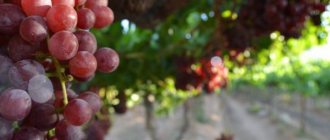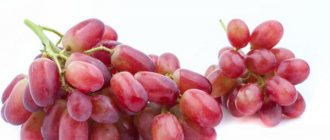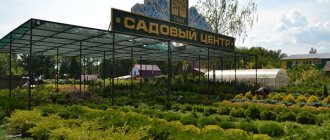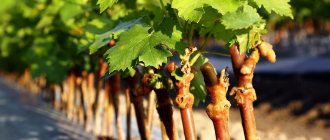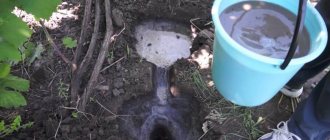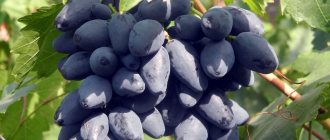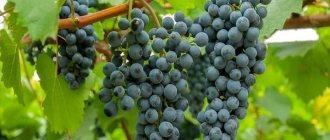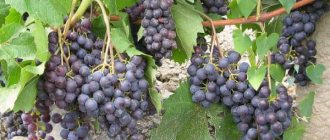The Kodryanka grape is a unique plant that does not require special attention. It bears fruit even on infertile soil and adapts to any climatic conditions. For these advantages, gardeners love to plant this variety in their dachas.
Grapes Codryanka
Bunches of Codryanka grapes weigh from 0.5 to 2 kg
The Codryanka grape grows best in warm climates
Description of the Codryanka grape
The bush is vigorous, can reach a height of 2 m, is undemanding in care, and gets along well in infertile soil. The grapes are wrapped in large round leaves with a wavy profile. On the lower part there is bristly pubescence. Sharp teeth on the edges protrude along the edges of the leaves. Grapes always form shoots that ripen at the end of the season.
The plant holds clusters weighing 0.5-2 kg. They produce large oblong purple berries; one fruit weighs from 10 to 15 g. The pulp is crisp and dense, sweet in taste, and has a pleasant aroma. The skin is thin, the amount of sugar in the fruit varies from 10 to 20%.
It is better to grow the plant in a warm climate, but some summer residents take risks and plant it in the middle zone, protecting it from frost for the winter.
Measures to prevent bunch peas:
- Preventing thickening of the “Black Magic” bushes with shoots (pinching and pinching the green part above the 6-7th leaf);
- Removing leaves from the north or east side before flowering. This measure will increase the ventilation of the bushes and at the same time their pollination will improve.
- Treatment with preparations with a high content of boron and zinc before and after flowering. Prevention against shedding of grape flowers. It has a very good effect on the normalization of pollination processes and fruit development.
- Pollination using Hederelin solution. As a result, you will receive not only a beautiful, uniform bunch, but also seedless grapes.
Characteristics of the variety
It is characterized as a table variety, so its main use is fresh consumption. The berries are securely attached to the stalk, so the crop can be transported over long distances.
When the fruits are fully ripened, the amount of sugar in them is about 15%. Rated by experienced taste tasters – 9.1 points. Codryanka grapes can hang on the plant for a long time and not lose their taste and commercial qualities.
Productivity and fruiting
Gardeners living in regions with short summers are always worried about the timing of bush ripening. Based on this criterion, we can safely say that the plant is best grown in the middle zone, because Kodryanka is considered an early crop.
The fruits ripen 90 days after bud break. Gardeners believe that rationing of Kodryanka grapes is a mandatory measure. The number of brushes depends on the age of the plant and its dimensions.
As for the yield, the Codryanka grapes produce about 15 tons of berries from 1 hectare. The fruits are sweet and pleasant to the taste; they always turn out to be of high quality and tasty, regardless of natural conditions.
If harvested at the wrong time, it will completely crumble.
Area of fruit use
The Kodryanka grape is a table variety, so it is consumed fresh. The fruits do not lose their presentation for a long time, so they can be transported and stored for a long time.
Codryanka berries make excellent jams, drinks, sauces and wines. It can be dried to form raisins, but many gardeners do not do this because the berries contain seeds.
The Codryanka grape produces excellent wine.
Drought and frost resistance
This variety boasts excellent cold resistance; the plant also tolerates frost well in the spring. The bush needs to be covered only when the air temperature drops below -22 degrees Celsius; the plant can withstand a higher temperature without problems.
The vine does not suffer or die from the summer heat. However, this does not mean that watering is abandoned; on the contrary, the amount of water during this period is increased.
Resistance to diseases and pests
The plant has a fairly strong immune system. Practically does not suffer from mildew and oidium.
Description of bunches and berries:
The brushes of “Black Magic” have a beautiful shape of an elongated cone with small wings. The length of the bunches is 20-30 centimeters. Their density is moderate, and sometimes the clusters are loose, weighing from 400 to 800 grams. The berries are elongated, blue-black in color, covered with a dense white pruin. The flesh is crunchy, the thin skin is not noticeable when eating. They have a magical taste with the aroma of blackcurrant and prunes. The average size of the berries is 30 by 19 millimeters, but can be larger. The weight of the berry is not very large: 6-9 grams. The content of sugars and acids is harmonious. Sugar content is 16-19% against the background of an increase in acidity of 6-8%.
The early preponderance of sugars over acids makes it possible to harvest “Kodryanka” already at 14% sugar, without waiting for full ripeness.
Advantages and disadvantages
The Kodryanka grape variety, like other plants, has its pros and cons; when growing this bush, they must be taken into account.
Advantages of the variety:
- high taste, pleasant aroma;
- excellent transportability;
- preserves its presentation for a long period of time;
- strong immunity;
- early maturation;
- the quality of berries does not depend on climate and weather;
- high yield.
Disadvantages of the variety:
- it is necessary to ration the bushes, otherwise a large amount of harvest will break the branches;
- Over time, the berries may become smaller.
Reviews about the Kodryanka variety
Nikolay:
“The variety is good, as for peas, I can say that the whole point is what weather conditions will be during flowering. Heavy rainfall (as well as extreme heat) usually has a negative effect. But I don’t find many such berries in bunches at my dacha. Basically, they are all large, sometimes weighing up to 1 kg. It has been growing for more than 5 years and bears fruit steadily. I don’t hold any prejudices regarding herbicides and pesticides - I treat them strictly twice a year, in spring and autumn. As a result, I have a bountiful harvest and wonderful grapes for the table throughout the summer.”
Rules for planting grapes
The Codryanka grape is considered one of the most unpretentious bushes, however, in order to constantly receive a large amount of harvest, it must be planted on time and correctly. Let's consider the main aspects of planting grapes.
Deadlines
The plant can be planted both in autumn and spring. The only exception is the northern regions of the Russian Federation - it is better to choose in the spring. This action will help the bush take root in the ground faster. Grapes are often planted in the middle or end of spring, when the earth warms up to +16 degrees.
Selecting a location
Almost any grape variety loves warmth and sun, Codryanka is no exception. The bush should be planted in an area that is protected from drafts and well lit. An excellent option is the south-eastern slope or the southern part of the garden.
Codriana is not picky about the soil, but it grows slowly in heavy soil.
Selection and preparation of planting material
A rich harvest can only be obtained with the right choice of planting material. It is necessary to use a cutting at the age of 1 year, because a perennial shoot may not take root in a new area. A suitable seedling should have 1 or 2 vines.
Planting: step-by-step diagram
Planting grapes is not difficult, but you must adhere to a certain algorithm of actions:
- When planting in spring, dig a hole and fill it with fertilizers in early autumn; when planting in autumn, a month before planting the seedling.
- Place drainage in the hole.
- Make a mixture of soil, humus and sand (2:1:1), fertilizer (2 tsp) and ash (1 shovel). Fill the hole with this material and leave it like that until planting the variety.
- At the time of planting, place the cutting in a hole at an angle of 45, sprinkle the roots with fertile soil. Pay attention to the root collar; they should be placed above the ground at a distance of 50 mm.
- Water the soil, mulch it with humus and sawdust.
To learn how to properly plant grapes in spring, watch the following video:
History of selection
This hybrid variety was bred in the mid-80s of the last century by breeders of the Moldavian Research Institute of Viticulture and Winemaking NPO “Vielur” by crossing the well-known industrial “dark” table varieties “Moldova” and “Marshalsky”.
Grape varieties that served as parent forms: “Moldova” (left) and “Marshalsky” (right)
Thanks to its good ability to adapt, the variety has become widespread in our country and has moved far to the north from the boundaries of its natural range. After successful state tests in 1997, “Kodryanka” was officially registered in the State Register of the Russian Federation, recommended for cultivation in three regions - the North Caucasus, Lower Volga and Ural.
Currently, the possibilities of growing this variety of crop are being assessed on experimental plots in the typical soil and climatic conditions of the steppe zone of the southern Urals and in private agricultural lands of the Kursk region (Central Black Earth region of the Russian Federation), as well as in Belarus.
You can get acquainted with the features of “Kodryanka” in more detail from the video filmed by a Belarusian amateur winegrower:
Features of caring for Codryanka grapes
Caring for the Kodryanka variety is not particularly difficult; you need to water the bush on time, fertilize it and prune it.
Watering and fertilizing
In the spring, shoots of the bush actively grow, so nitrogen is considered an excellent fertilizer; it promotes the growth of green mass. During the flowering period, the plant needs nitrogen and potassium. Apply phosphorus 14 days before technical ripeness.
The older the plant, the more fertilizing it needs. Plants of the 1st and 2nd year of life are not fertilized, especially if they were fed during planting. In spring and autumn, the soil around the grapes is mulched using humus.
In order for the grapes to produce a large amount of harvest, the top layer of soil must not be allowed to dry out completely. The standard water requirement for 1 bush is 6 buckets of water.
Read the articles for tips on how to feed grapes in spring and autumn.
Shaping and trimming
When the bush reaches 2 or 3 years, it is pruned. It is better to carry out the event after the growing season. Leave 5-10 eyes on the vine, and no more than 2 on the replacement knot. The number of shoots is reduced to 16 pieces.
In the autumn season, grapes need to be prepared for wintering; to do this, remove all dry, old and damaged branches. In the spring, get rid of those that could not survive the frost.
Read the next article about how to care for grapes in spring.
Reproduction
The bush is propagated by cuttings; this activity should be carried out in the spring of the year before the start of sap flow.
Grape propagation algorithm:
- Cut the stalk with a sharp knife and place it in a container with water for a couple of days.
- Move the cutting to another container with the nutrient mixture. To create the mixture, use a couple of drops of “Humate” per 1 liter of water. This drug helps accelerate the rooting of the root system in the soil.
- After a couple of days, plant the cuttings in the ground. Planting is no different from planting a seedling.
- During the winter season, the cuttings are covered with film so that they survive the frost normally.
The harvest from a cutting will have to wait 1 year longer than from a 1-year-old seedling.
Protecting crops from insects and birds
Birds and insects are the main enemies of grapes; birds love to feast on juicy and tasty berries. To protect against pests, you should cover the place where the clusters grow with a light nylon net, hanging it on both sides of the trellis, forming a belt (height about 1 m).
Shelter for the winter
As mentioned earlier, the bush needs shelter if the air temperature drops below -22 degrees Celsius. The plant is covered with hay or straw in November.
About the features of growing Codryanka grapes, watch the video:
Diseases
This variety is characterized by increased resistance to disease, at a level of 2.5-3 points to oidium and mildew. For preventive purposes, you can spray twice a season with standard means to combat these diseases before flowering and immediately after the berries have set.
Grapes may require preventive measures against anthracnose, chlorosis, bacteriosis, rubella and bacterial canker. Read about them in detail in separate materials on the site.
To combat rodents that can damage the bush in winter, it is recommended to tie the plant with spruce branches.
As for other pests (phylloxera, spider mites), standard agrotechnical measures in the form of thinning the bush and timely removal of old or damaged parts will reduce these problems to a minimum.
Thanks to its unpretentiousness and durability, the Codryanka grape variety is loved by many winegrowers. Even in years with unfavorable conditions, the variety produces a large amount of harvest. Its berries are always saturated with beneficial microelements that strengthen the body as a whole and have healing properties. Kodryanka is a worthy form of grape for home gardening, which is perfect for beginners.
Reviews from gardeners
★★★★★
Oksana, 65 years old, cleaner, Krasnoyarsk. I really like the Kodryanka grape, my mother grew it.
It was very big, curled around the arch, I still remember its sweet and juicy taste. There was never any particular problem with the plant; even unfavorable weather did not harm the harvest. ★★★★★
Angelika, 30 years old, cook, Odessa. I'm thinking of planting this variety this year.
I read a lot, watched videos. It looks exactly like Moldova grapes, it’s a pity you can’t taste it on the Internet, but judging by many videos, it’s very sweet. ★★★★★
Elena, Krasnodar
It’s not just sweet, it’s very tasty. When you eat you can’t stop. And although everyone’s taste is different, my friends are of the same opinion.
Hide
Add your review
With proper planting of Codryanka grapes, proper care and maintenance, a rich harvest will not be long in coming. Therefore, this variety is very popular among both experienced and novice gardeners.
0
0
Copy link
Harvest and use
Codryanka grapes are harvested closer to autumn or in the fall, depending on the place of cultivation. After collection, it must either be stored or processed. If you don’t have time to process it, you can keep it on the vine for a while, it won’t spoil.
The use of Codryanka grapes is almost universal. It is grown en masse for sale or winemaking. You can eat it raw, process it and cook it. The only thing that is not made from it is raisins, and then only because of the presence of seeds. It can be stored for a long time, but the conditions must be suitable. If you are not sure of the quality of the basement or cellar, it is easier to put it in the refrigerator.

